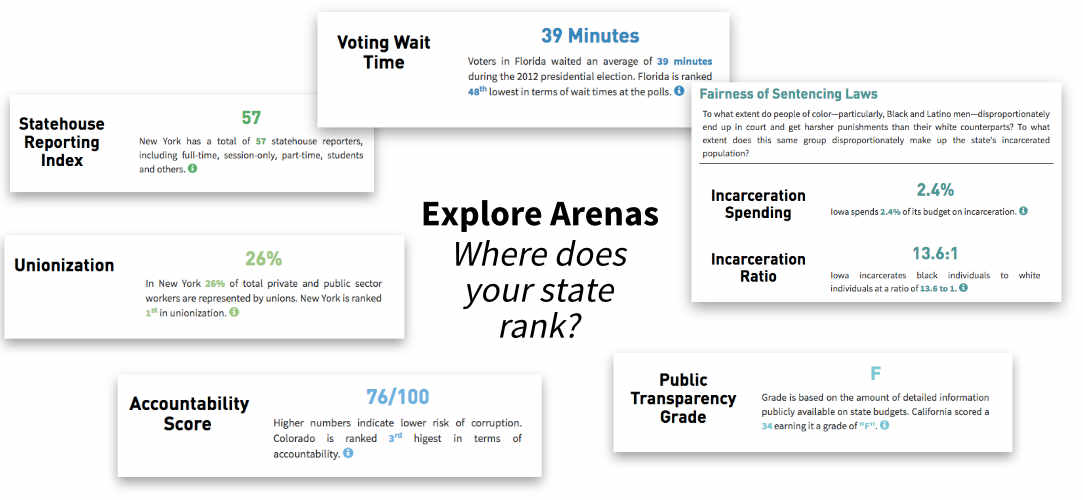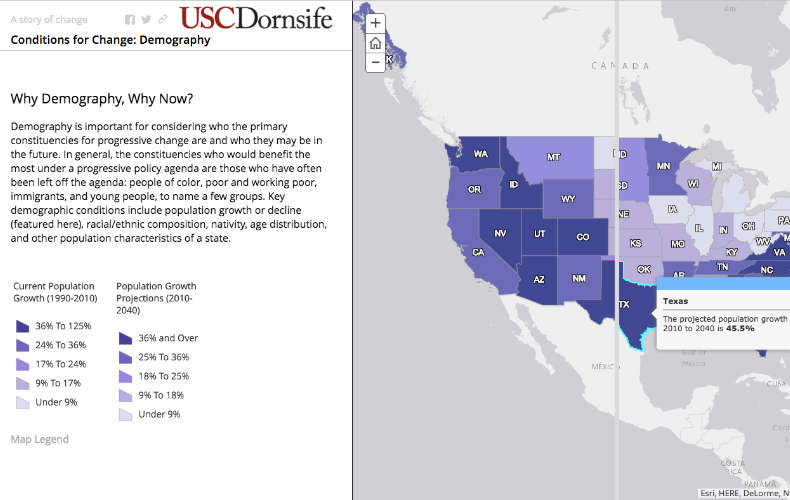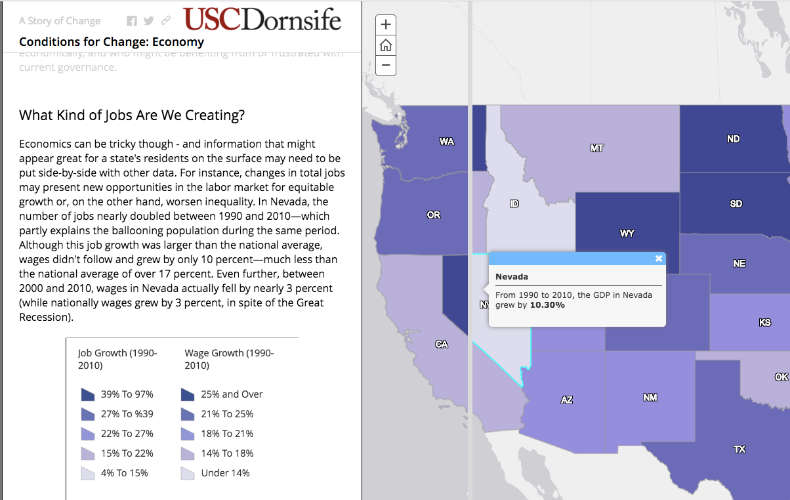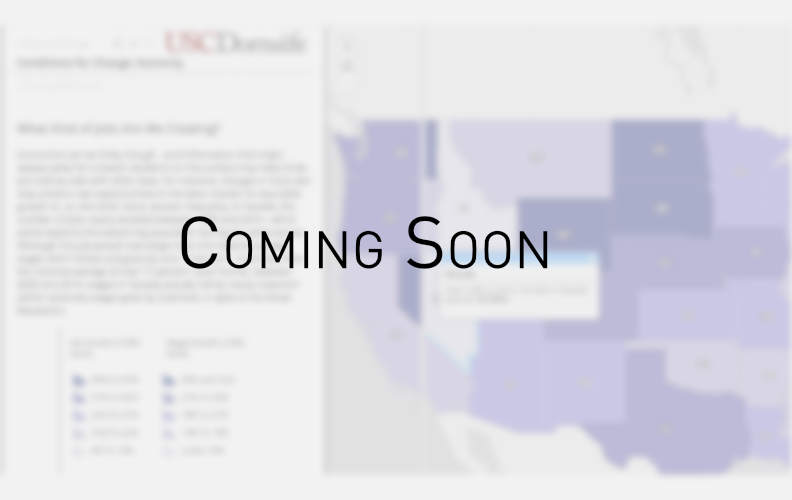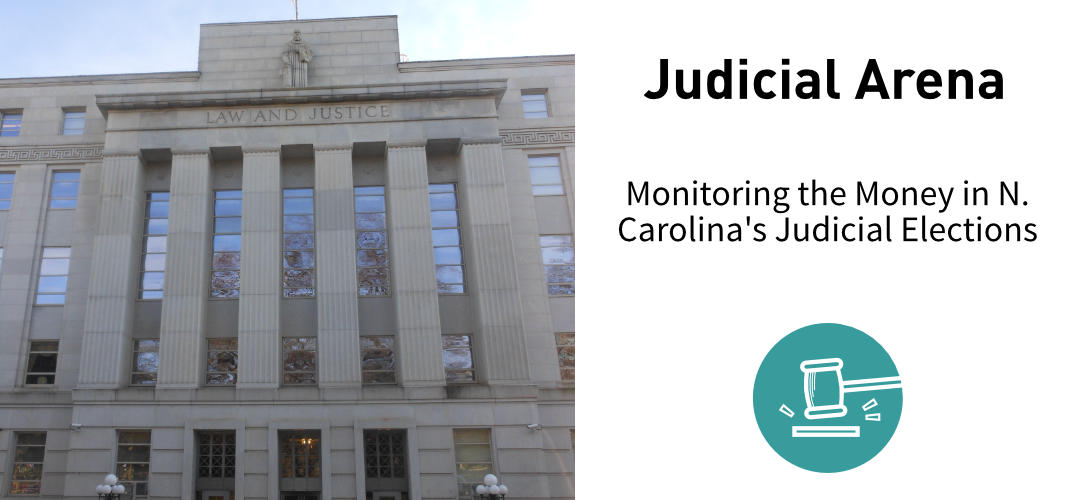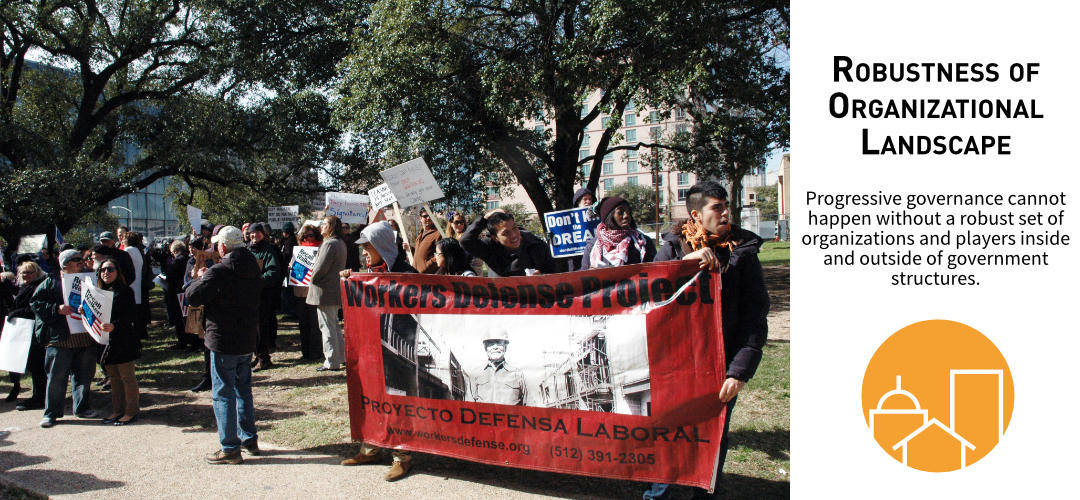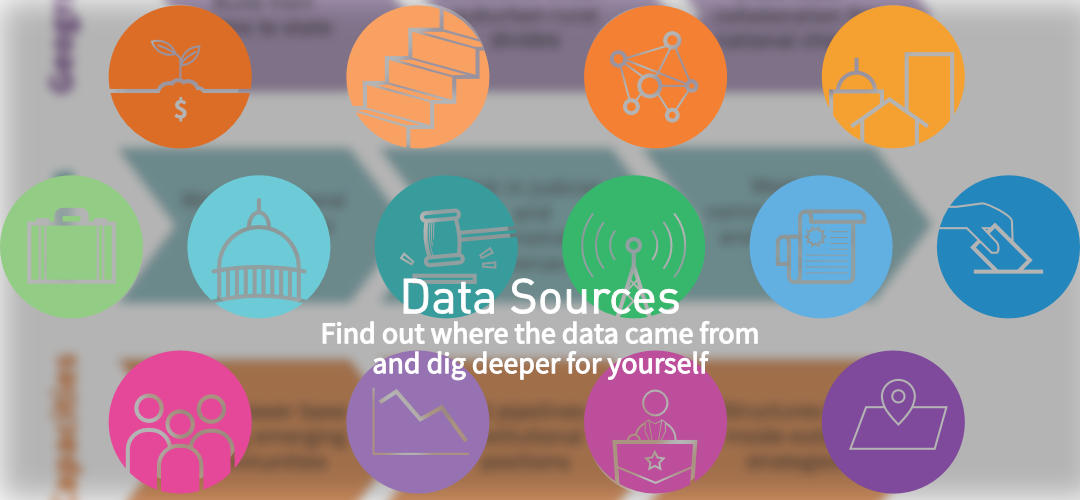Changing States:
a Framework for Progressive Governance
Amidst the flurry of this presidential election year, the attention on states is often more focused on short-term swings. This tends to narrow investments in states that may be "tipping"—ready to go in one political direction or another. This can also lead to neglect of the in-depth infrastructure and capacities needed to develop and deploy the kind of power that leads to change that improves people’s lives. PERE's report, Changing States: A Framework for Progressive Governance, offers a three-part framework—conditions, arenas, and capacities—for determining pathways to progressive governance.
Research
Based on two years of quantitative and qualitative analysis, field visits to five different states, and vetting and discussion with experts, this report emphasizes three main shifts in thinking:
- An attention to wielding—not just winning—power that aims to fundamentally change states so that we can change a nation
- An approach to states as building blocks for progressive governance—not merely as stepping stones to federal policy change; and
- An assessment of states that looks beyond swaying an election or swinging a particular state but rather is part of a 50-state strategy that lifts up the dimensions for power building.
The Framework
The Changing States framework maps out three dimensions that shape the pathways to progressive governance:
- The Conditions that set the context for social change efforts: demographic, economic, political, and geographic;
- The Arenas that define the broad terrain upon which changes are waged, won, implemented, and protected: electoral, legislative, judicial, administrative, communications, and corporate
- The Capacities for change that must be in place to build enough power in the six arenas: organizational breadth and depth, networks and alliances, leadership ladders and lattices, and resource base.

Explore Conditions of Change
An understanding of current conditions—as well as past and future trends—is helpful in identifying critical constituencies and the issues that might animate them for progressive change. It is also useful to look at not only where the state is (or has been) but also the direction in which the state is headed. For this, we turn to the Conditions for Change: Demography, Economy, Politics and Geography. Learn the big-picture stories in the U.S. or explore the conditions for your state here

Explore the Arenas of Change
Where does the struggle for progressive change—and ultimately, progressive governance—actually occur? In this section, we describe six decision-making arenas—the target areas for organizing efforts to push, pass, and protect progressive policies and systemic change. These include the electoral, legislative, judicial, administrative, communications, and corporate arenas. Together these define the broad terrain where ideas, policies, and power are contested—and this tool is designed to help facilitate a systematic understanding of where the roadblocks and opportunities lie. Learn more here about why arenas matter and get the data for your state!
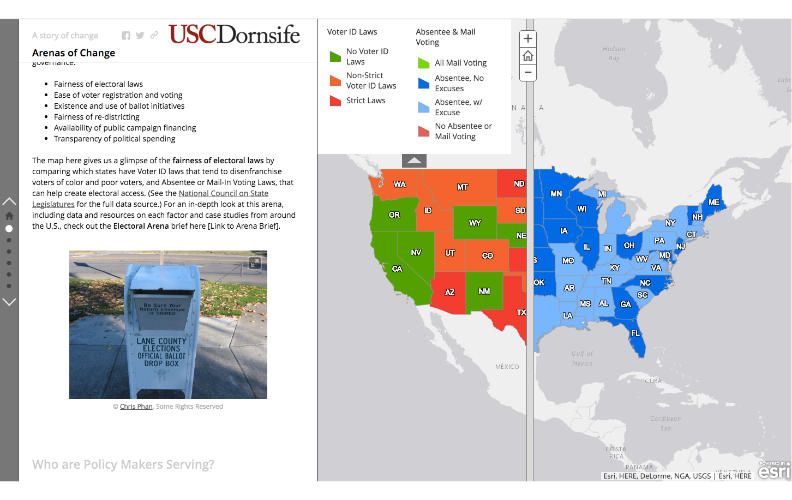
Explore Capacities of Change
So, what are the capacities to ensure accessibility to decision makers and decision-making, accountability to grassroots communities (and to the values of economic inclusion and democratic participation), and transparency of governing structures and processes? Are there actors and relationships on the ground ready to shift the tide toward progressive governance across the public and private sector? How can actors build power at the state level to confront the barriers to these transformations?
More simply put, what is needed to make change happen? To get the conversation started, check out the capacities of change here!

See the Framework in Action
The Changing States Framework is a lens through which we can understand where a state is, where it could be, and how to get there. For this early stage in the report's life, we've focused on five states—Nevada, North Carolina, Ohio, Texas, and Washington—to holistically apply the framework, as well as a case study for each of the six Arenas of Change.
Conditions for Change
An understanding of current conditions—as well as past and future trends—is helpful in identifying critical constituencies and the issues that might animate them. It is also useful to look at not only where the state is (or has been) but also the direction in which the state is headed. For this, we turn to the Conditions for Change: Demography, Economy, Politics and Geography.
Arenas of Change
Where does the struggle for progressive change—and ultimately, progressive governance—actually occur? In this section, we describe six decision-making arenas—the target areas for organizing efforts to push, pass, and protect progressive policies and systemic change. These include the electoral, legislative, judicial, administrative, communications, and corporate arenas. Together these define the broad terrain where ideas, policies, and power are contested—and this tool is designed to help facilitate a systematic understanding of where the roadblocks and opportunities lie.
Electoral Arena - Choose State
The electoral arena is where voters are the final decision makers: They shape policy indirectly through electing representatives or directly through ballot initiatives.
Explore Electoral Data in Your State
Legislative Arena - Choose State
The legislative arena is where elected officials and policy makers are the decision makers as they propose, craft , and approve (or disapprove) laws.
Explore Legislative Data in Your State
Administrative Arena - Choose State
The administrative arena is where executive officials and government staff are the decision makers. They oversee and implement laws and rules, coordinate regulatory bodies, and administer public participation processes.
Explore Administrative Data in Your State
Judicial Arena - Choose State
The judicial arena is where decision makers are state-level courts and judges as they determine the legality of policies and practices.
Explore Judicial Data in Your State
Communications Arena - Choose State
Communications as an arena of change is about the power to influence the values, worldviews, and understandings of the public at-large.
Explore Communications Data in Your State
Corporate Arena - Choose State
The corporate arena is where business management and corporate stakeholders make decisions that directly affect workers and families.
Explore Corporate Data in Your State
Explore the Arenas of Change Map
Explore the Arenas Story Map. Do voters have a voice? Who are policy makers serving? Are courts delivering justice? Are administrators implementing equitably? who controls the public conversation? Can corporations be held accountable? This interactive map gives you a national view of a story from each arena of change. From there you may drill down to individual states in the data portal.

Capacities for Change
An understanding of the rules, structures, and processes of decision making must be coupled with strategiesfor building power to influence decision making. For example, reforming the rules to expand voting access will not automatically enfranchise low-income, minority, or marginalized communities; these reforms must be accompanied by outreachor other grassroots action to empower and mobilize voters within the new structures. In other words, rules matter, but capacity building to takeadvantage of the rules is essential.
So, what are the capacities to ensure accessibility to decision makers and decision-making, accountability to grassroots communities and the values of economic inclusionand democratic participation, and transparency of governingstructures and processes? Are there actors and relationships on the ground ready to shift the tide toward progressive governance across the public and private sectors—and confront the barriers to these transformations? More simply put, what is needed to make change happen?
Pathways to Progressive Governance
The Changing States framework is about understanding the long-term building blocks and the pathways toward progressive governance in any state—and under any "state of change." Below is an example of how one might start thinking about those building blocks and pathways:

Explore Further
We strive for transparency and accessibility. This site is full of research—both original and secondary—and we intend it to be as easy a jumping off point for your own studies as possible. Here you may download the report, download our data, and explore the sources that went into this report as well as what made changingstates.org possible.
Download Report
This site is merely a companion to the Changing States full report. To fully understand and utilize this site, you must read the whole work. Download the report and get reading! Download Report

Download Data
We aim to make this site as useful as possible and that means making our data as open and accessible as possible. All data included on this site is available for download in multiple formats. If you would like to see a new format added, please use the contact portal to make a suggestion! Download Data

Data Sources
The Changing States project was created in large part using publicly available data sources, and indicators compiled by other researchers and foundations. View Data Sources
Research and Site Credits
A lot of people put a lot of work into this thing. Please take a minute to marvel at their awesomeness. View Site and Photo Credits





